If you are teaching reading to your little one or have a child who is having trouble reading, then it is vital that they become proficient in sight words. Sight words are about 87% of all the words that children read in their trade books. Words like “the” “in”, “a”, “it”, and “is” are all part of this very important list. These words are phonetically irregular words, meaning you cannot use phonics to decode them so they must be learned by sight. Knowing sight words is one of the basic building blocks when learning how to read and one that should not be ignored.
What happens if the Reading or Phonics program you selected does not include the teaching of sight words? I suggest that you do it on your own and it is quite simple. Am I saying that you shouldn’t teach Phonics? NO! Never! Phonics is important or just as important as teaching sight words. Many programs fail to integrate both of these in their reading programs, which is unfortunate but important for homeschooling moms to know. For the purpose of this post, I’m going to focus on sight words.
There are two lists but most of the words overlap; Dolch Sight Words and Fry Sight Words are the two lists you can work from. In the 1940s, Dr. Edward William Dolch used 220 phonetically irregular words and 95 common nouns to create his Dolch Sight Word List. He chose words that were most often used in children’s reading books during the 1920s and 30s. In the 1990s, Dr. Edward Fry took the Dolch researched list and created 1,000 most frequently used words and put them in order of frequency. Children should be repeatedly exposed to these words so that they learn them quickly. This bolsters their reading self-esteem, which in turn makes them want to read more. You would be so surprised how your little Joseph or little Mary is going to want to start reading and selecting books at the library!
The Fry list is arranged by levels of difficulty advancing in it and the levels of infrequency. Dr. Dolch created his lists to be mastered by the third grade while Dr. Fry’s list is separated by grade levels and goes up to the fifth or sixth grade. Each list is separated by 100 words so the first 100 words are called pre-primer words and should be learned by kindergarten; the next words are learned in increments of 100 (I suggest they should only be taught 5-10 at a time until mastered). Once those 10 are mastered, you teach another 5-10 but always exposing them to the previous ones either by games or flash cards as well as easy reader texts.
Here are the list of the Fry Sight Words for your use in PDF format:
When you should start depends on your child’s ability. For example, when my son was six years old he struggled in reading. We studied the first two hundred words in kindergarten but he still was not very sure or solid reading them by sight and kept trying to phonetically sound them out. So in the first grade we focused on mastering the following sight words:
Trimester 1: Words 1-150
Trimester 2: Words 151-300
Trimester 3: Words 301-500
There are several ways to teach sight words. Repetition is important in learning these words by sight, but it can be boring; it is vital that you make this as fun of an experience as possible! Here are some examples of things we have done:
1. Make flash cards
2. Play memory games
3. Practice tracing the words
4. Use tactile things like play dough mats or any multi-sensory way to create the words
5. Create a power point of the words
6. Use the words to create sentences
7. Teach the shape of the word
8. Play sight word games
9. Make word pyramids of the words
10. Write the words in pen then have them trace using different colored highlighters
This next game I call: “Shake it, Roll it, and Write it!” I’ve created a printable to share with you of this word game, and here are some pictures with my children when they were in kinder and first graders using this game to learn new words or practice old one.
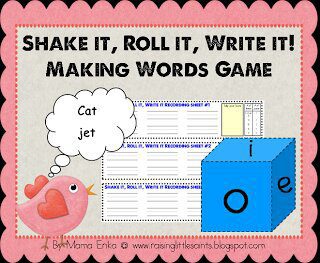
With this printable you will be able to create seven blocks each unique to the other to create this game.

This is the recording sheet I created to accompany the game. I inserted ours in sheet protectors and the kids used dry erase markers.

Here are pictures of my children playing the game, they roll the die and use the letters to create words. The longer the word the more points they get. It is a great game to play on Mondays to get them going or even as a center when one or two children have finished work and you still need to finish working with other students.
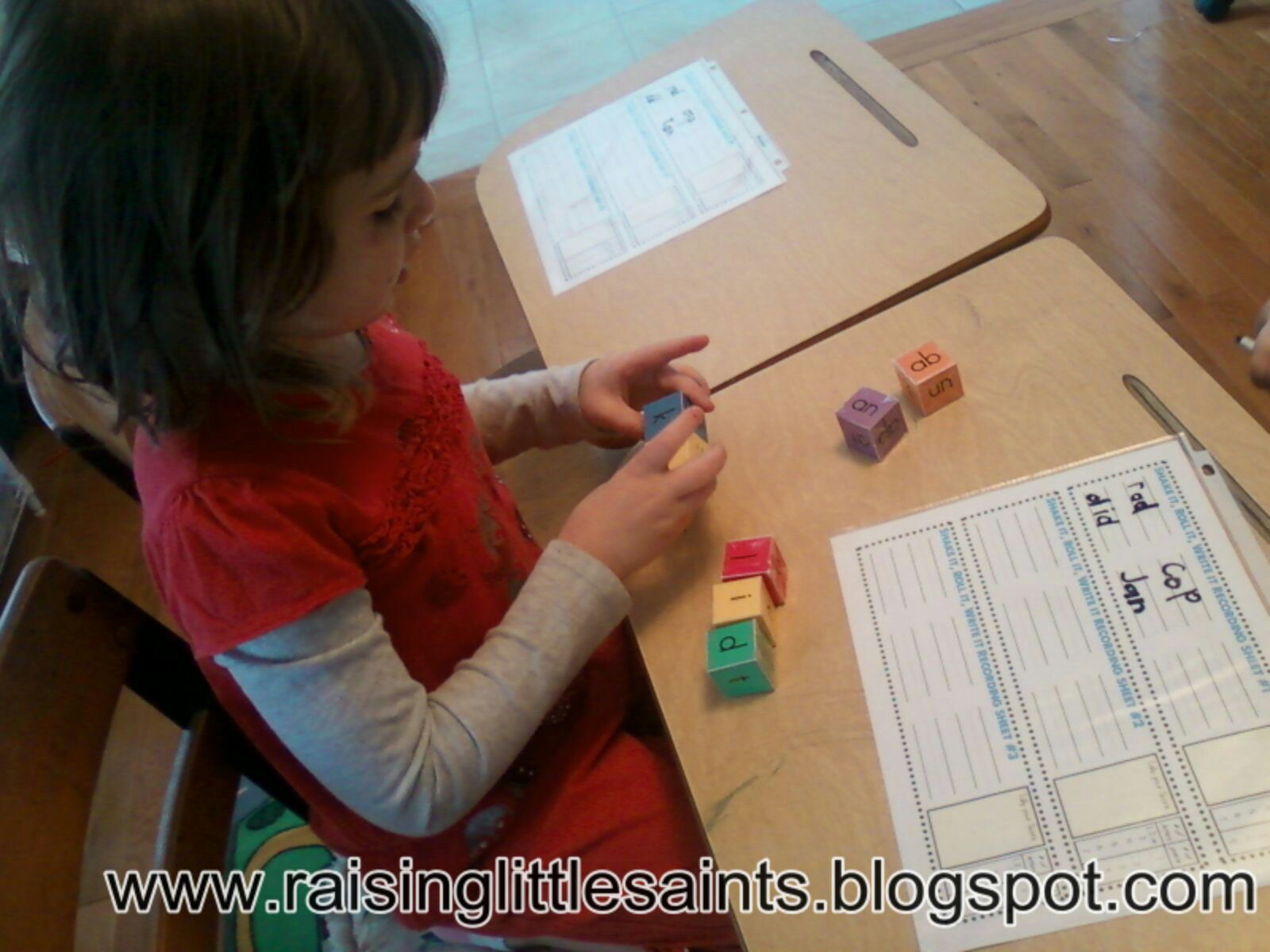
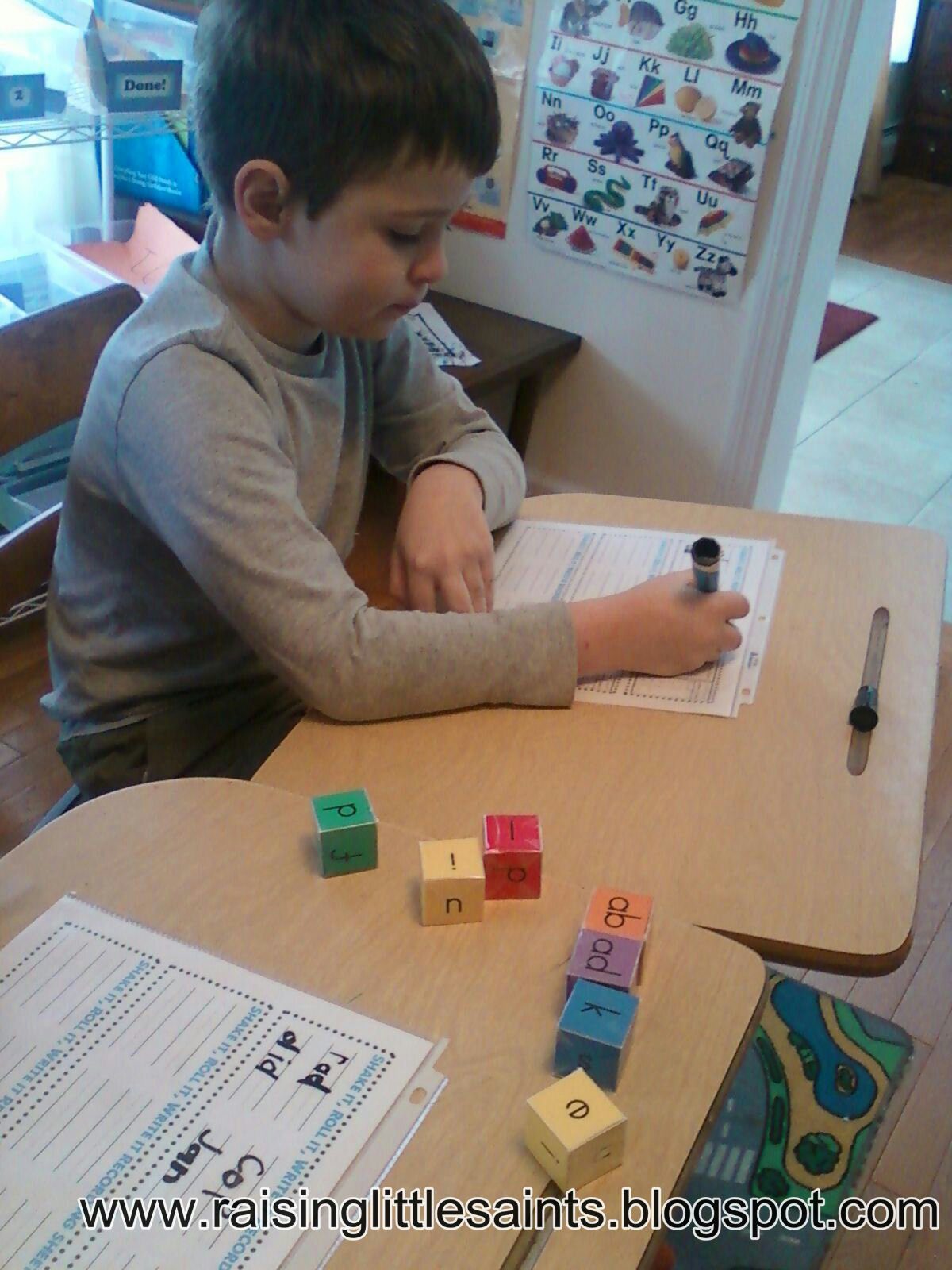
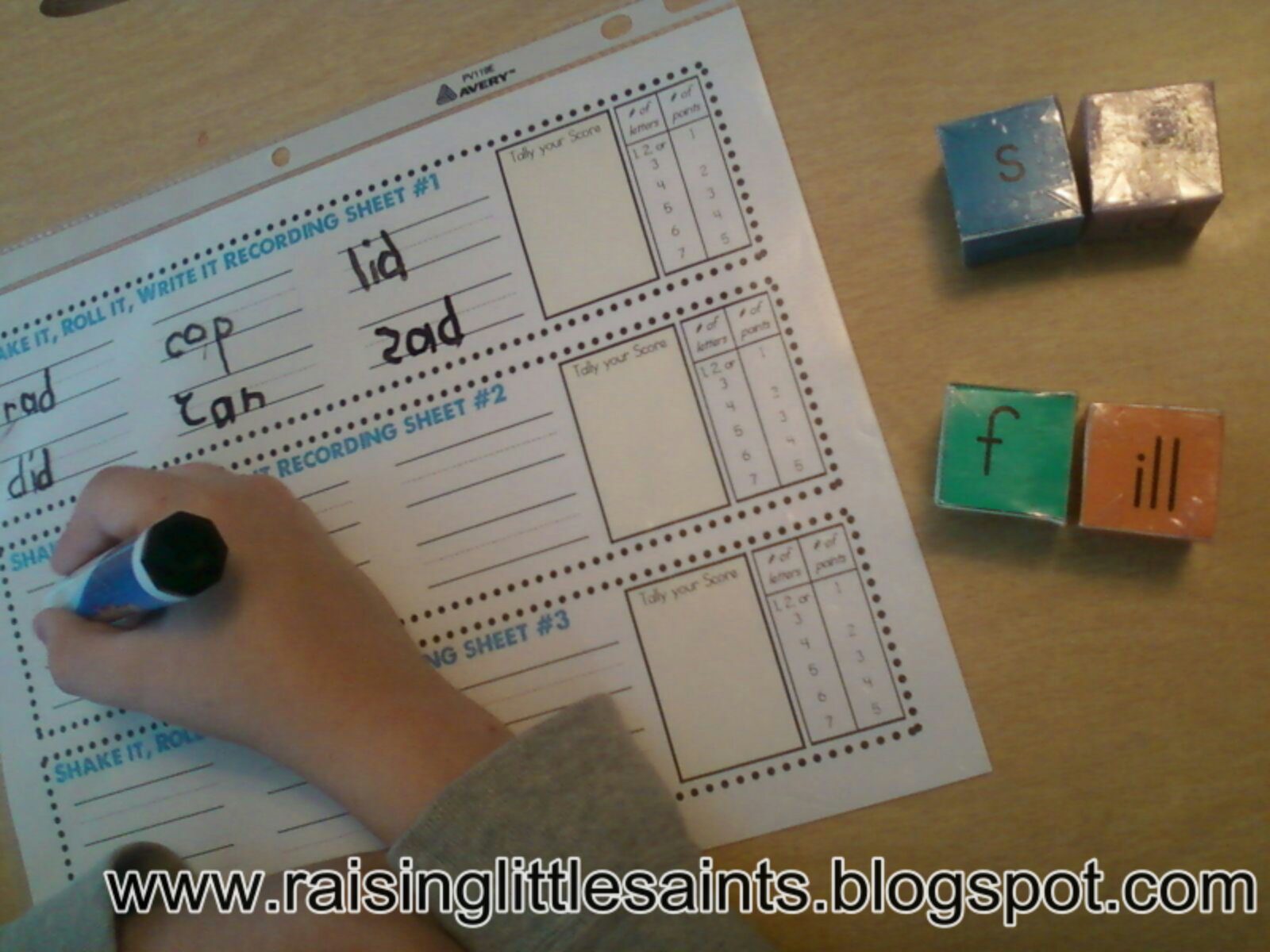

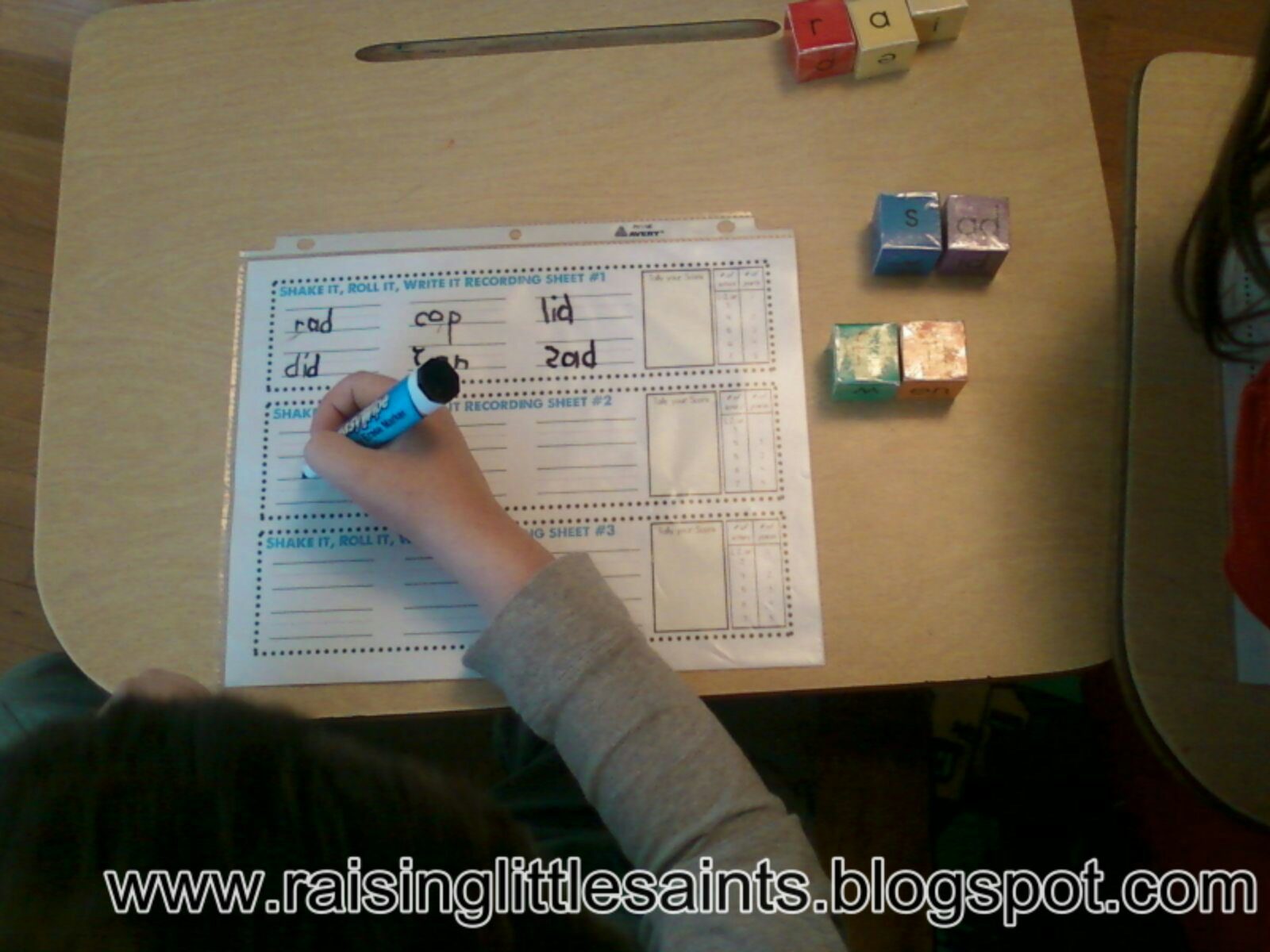
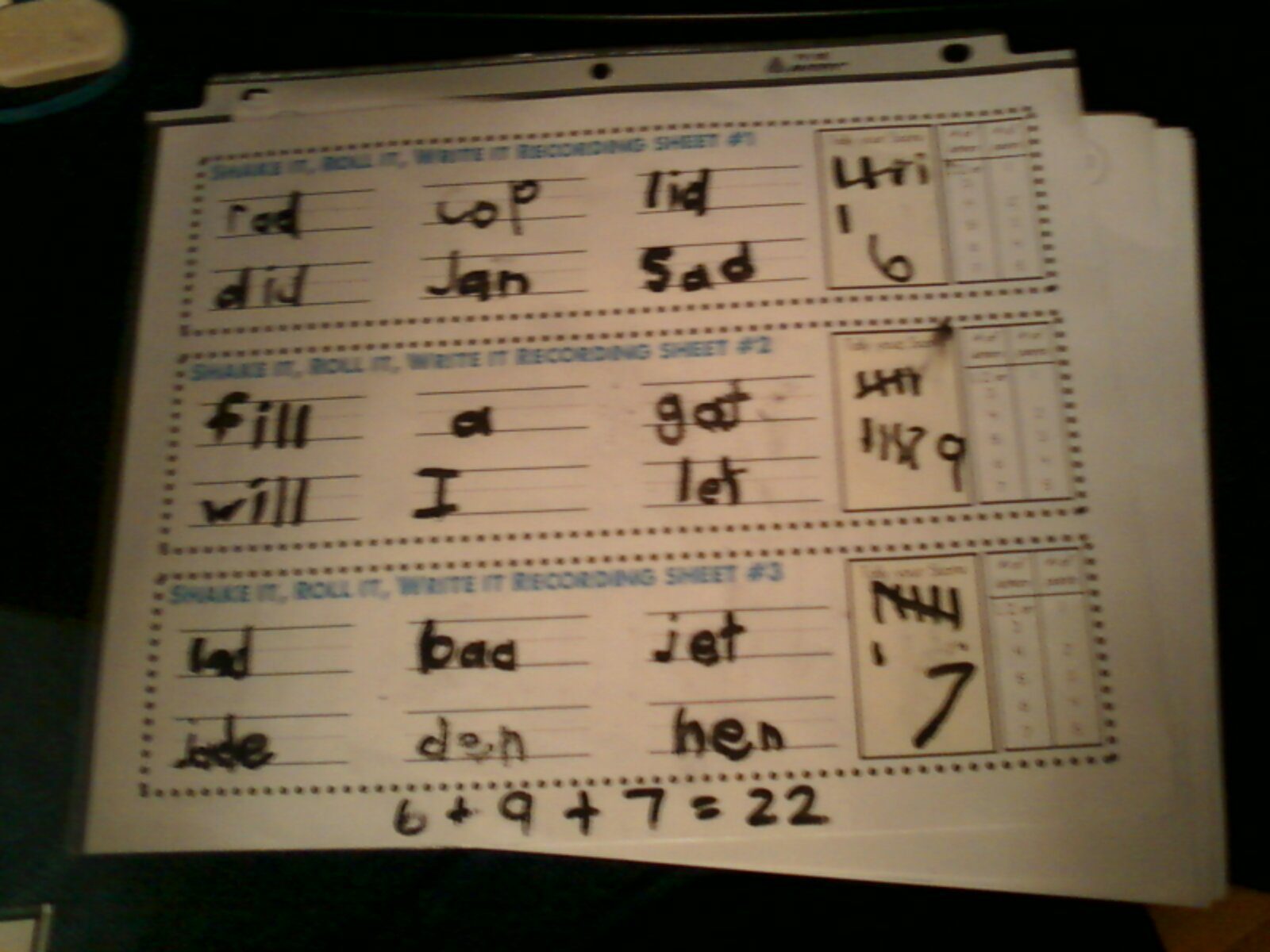
Do you have other games or ways you work with words to help your children learn? We would love to hear about them!
